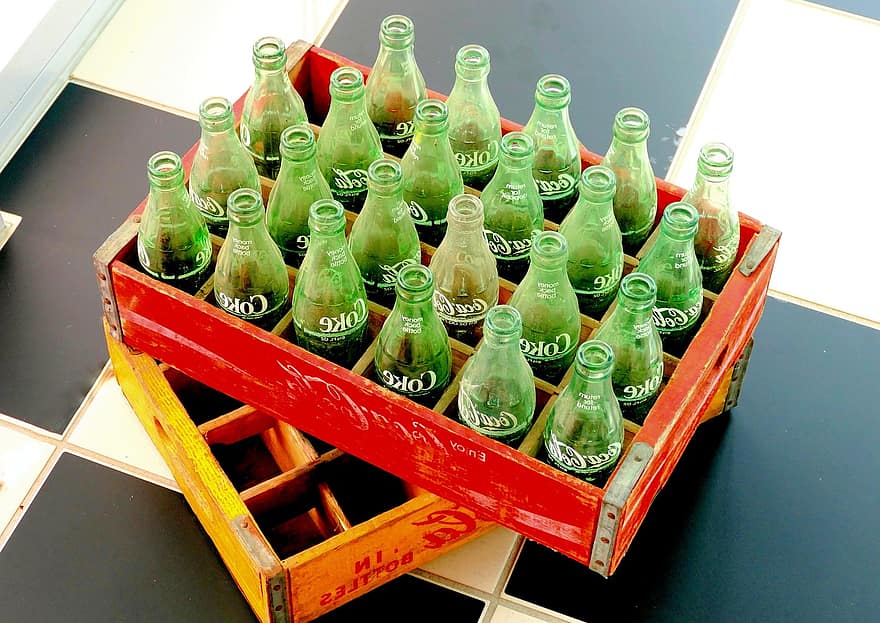Why sustainability needs a blast from the past
Nestled in wooden crates are vintage glass Coke bottles. Glass soda bottles like these, made from renewable material, are one way that we can learn from the past about being more eco-friendly and to assess changes we can make today.
September 7, 2020
We are all aware of the current threat that climate change is having on our society. Recently, there have been more hurricanes, wildfires, record-breaking temperatures, and melting from polar ecosystems sprouting in all areas of the world. Scientists and sustainability advocates are trying to address these problems with ways people individually can be more eco-friendly. We know that reusable straws, lowering meat consumption, and driving our cars less are ways to show mother earth love, but if we look to the past, we might find that we should rethink practices that we use today.
Plastic is one of the biggest contributors to large amounts of waste and climate change. Plastic water bottles alone can take over 400 years to decompose. One water bottle could still be on earth decomposing after your children, grandchildren, and possibly when your great-grandchildren are in their older years. That is a long time to even fathom. Disposable plastic bags used at grocery stores have not been around for a hundred years, and their contribution to the declination of the earth’s health is serious. In the late 1970s and ’80s, plastic grocery bags were used across America, and before that, paper bags were commonly used. While paper and plastic are both disposable, paper bags decompose faster and recycles more efficiently than plastic. In 1982, chains like Safeway and Kroger switched their paper bags to plastic, but before paper bags, people would use baskets, crates, sacks, or bowls to hold groceries. Household objects that shoppers already had were utilized, thus making the need to make thousands of plastic or paper bags necessary. Senior Ashley Jean and her mother put a lot of effort into being more eco-friendly. Ashley said, “We use biodegradable trash bags, and we do not get any plastic bags from stores because we bring our own reusable.” Now that is a sustainable mindset!
In the past, classic soda companies like Coco-Cola and Pepsi used to sell their products in glass soda bottles instead of aluminum cans. The way the process worked is that people made a down payment on the bottles they purchased at the store, and if they were returned, customers received that down payment back. The returned glass bottles would be sent back to factories to be cleaned, refilled, and reused for sale. The year 2012 marked the end of the refilling of the original six and a half glass coke bottles at the Coco-Cola bottling plant in Winona, Minnesota. Today, the glass soda bottles are seen as vintage, but utilizing them now could bring positive benefits to the environment. The current aluminum cans are not one hundred percent aluminum and contain other trace metals that may have BPA. Another positive to glass is that chemicals are not released while drinking or during the recycling process because glass is made of sand, a renewable source. Moving back to glass soda bottles and glass bottles for other beverages should be a consideration in the push for sustainability.
Overall, as a society, progress has been made to be more mindful of the planet, but there are many more examples of how history can teach us to be more earth-conscious. If previous generations could do it then, we should be able to try now! Sustainability does not have to be perfect, but remember that progress is key!












